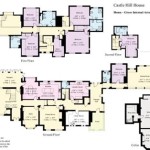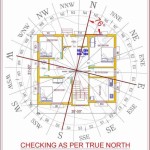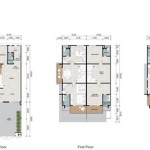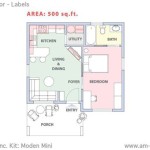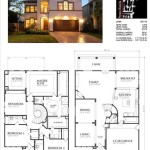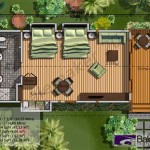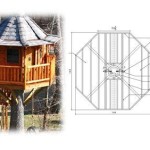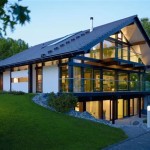Dormer Style House Plans: Design, Functionality, and Considerations
Dormer style house plans represent a popular architectural choice, blending functionality with aesthetic appeal. Dormers, structural elements projecting from a sloping roof, introduce light, ventilation, and additional living space to attics or upper floors. Understanding the various types of dormers, their associated advantages, and the planning considerations involved is crucial for homeowners and builders seeking to incorporate this feature into a residential project.
The term "dormer" originates from "dorme," an Old French word meaning "sleeping room," ultimately derived from the Latin "dormire," meaning "to sleep." This etymology reflects the historical use of dormers to create habitable spaces within attic areas. Throughout architectural history, dormers have evolved in both form and function, adapting to diverse regional styles and building materials.
Types of Dormers and Their Characteristics
The classification of dormers relies on their architectural design and how they integrate with the main roof structure. Each type offers distinct advantages and aesthetic characteristics that influence the overall look and feel of the home.
Gable Dormers: Gable dormers are perhaps the most common and recognizable type. They feature a simple, triangular roof structure that sits perpendicular to the main roof. The gable roof adds height and volume to the interior space below, allowing for more headroom and a wider window. Their straightforward design makes them relatively easy to construct and integrate into various architectural styles. Gable dormers are often preferred for their cost-effectiveness and ability to provide a traditional aesthetic.
Shed Dormers: Shed dormers have a flat or gently sloping roof that extends outwards from the main roof. This design creates significant additional headroom and floor space within the attic. Shed dormers are particularly suitable for maximizing usable space, making them ideal for converting an attic into a bedroom, office, or living area. However, their larger size can sometimes dominate the overall appearance of the house, requiring careful design considerations to maintain aesthetic balance.
Hip Dormers: Hip dormers feature a roof that slopes on three sides, converging at a ridge. This design creates a more subtle and integrated appearance compared to gable or shed dormers. Hip dormers can add a touch of elegance and sophistication to a house's exterior. While they provide less headroom than shed dormers, they still offer enhanced light and ventilation. Their complex roof structure can result in higher construction costs.
Eyebrow Dormers: Eyebrow dormers, also known as eyelid dormers, are characterized by their curved or arched roofline that gently slopes down to meet the main roof. They are smaller and less prominent than other dormer types and primarily serve an aesthetic purpose, adding a distinctive architectural detail to the roofline. Eyebrow dormers provide limited light and ventilation but contribute to a unique and visually appealing design.
Segmental Dormers: Similar to eyebrow dormers, segmental dormers feature a curved roofline, but with a more pronounced and defined arch. They offer a slightly larger window area than eyebrow dormers and can provide a greater amount of light. Segmental dormers create a distinctive architectural feature and are often used to complement traditional or historical architectural styles.
Wall Dormers: Wall dormers are built directly into the wall of the house, rather than projecting from the roof. This design is typically found in contemporary architecture and creates a clean, minimalist aesthetic. Wall dormers can provide significant light and ventilation while maintaining a streamlined exterior appearance.
The selection of a specific dormer style should consider both functional requirements and aesthetic preferences. Understanding the strengths and limitations of each type is essential for achieving the desired outcome.
Functional Benefits of Dormer Style House Plans
Dormers offer numerous functional advantages that contribute to the comfort and livability of a house. These benefits extend beyond simple aesthetics, impacting the usability and overall value of the property.
Increased Living Space: One of the primary benefits of dormers is the expansion of usable living space within the attic or upper floors. By creating additional headroom and floor area, dormers transform otherwise cramped or unusable spaces into functional rooms. This is particularly valuable in houses with steeply pitched roofs, where the attic area would otherwise be limited in its usefulness.
Enhanced Natural Light: Dormers introduce natural light into the upper floors, creating brighter and more inviting living spaces. The placement of windows within the dormers allows sunlight to penetrate deep into the room, reducing the need for artificial lighting. Natural light enhances the visual appeal of the interior and contributes to a more comfortable and healthy living environment.
Improved Ventilation: Dormers provide a means of natural ventilation, allowing fresh air to circulate throughout the house. The windows within the dormers can be opened to create a cross-breeze, reducing humidity and improving air quality. Natural ventilation can also help to regulate temperature, reducing the reliance on air conditioning and heating systems.
Enhanced Aesthetic Appeal: Dormers add visual interest and architectural character to a house's exterior. They break up the monotony of a plain roofline and create a more dynamic and visually appealing design. Dormers can be customized to complement the overall architectural style of the house, enhancing its curb appeal and increasing its market value.
Egress and Safety: In addition to their other functions, dormers can provide an emergency exit point from upper floors. A dormer window can serve as a secondary means of egress in case of a fire or other emergency, ensuring the safety of the occupants.
Consideration of these functional benefits is critical when evaluating dormer style house plans. A well-designed dormer can significantly enhance the comfort, livability, and value of a home.
Planning and Design Considerations for Dormers
The successful integration of dormers into a house plan requires careful planning and design. Factors such as structural integrity, building codes, and aesthetic considerations must be taken into account to ensure a safe, functional, and visually appealing result.
Structural Integrity: Dormers introduce structural modifications to the roof, requiring careful engineering to ensure the stability and integrity of the overall structure. The size, placement, and type of dormer must be carefully considered to avoid compromising the roof's ability to withstand wind, snow, and other loads. Consulting with a structural engineer is essential to ensure that the dormer design meets all applicable building codes and safety standards.
Building Codes and Regulations: Dormer construction is subject to local building codes and regulations. These codes may specify requirements for dormer size, height, placement, and window specifications. It is crucial to obtain the necessary permits and approvals before commencing any dormer construction project. Failure to comply with building codes can result in fines, delays, and potential safety hazards.
Roof Pitch and Style: The pitch and style of the existing roof will influence the design and placement of dormers. Steeper roof pitches allow for larger dormers with greater headroom, while shallower roof pitches may require smaller or more numerous dormers to achieve the desired effect. The dormer style should complement the overall architectural style of the house and integrate seamlessly with the existing roofline.
Window Selection: The choice of windows for the dormers is also a critical consideration. The size, style, and energy efficiency of the windows will impact the amount of light and ventilation provided by the dormers. Windows should be selected to complement the overall design of the house and to meet local energy efficiency standards. Consider factors such as window glazing, frame material, and operability when making your selection.
Exterior Materials: The exterior materials used for the dormers should match or complement the existing materials on the house. This will create a cohesive and visually appealing design. Consider factors such as siding, roofing, and trim when selecting exterior materials for the dormers.
Interior Layout: The interior layout of the rooms beneath the dormers should also be carefully considered. The placement of windows and walls should be optimized to maximize the use of space and to create a comfortable and functional living environment. Consider factors such as furniture placement, lighting, and ventilation when planning the interior layout.
Cost Considerations: Dormer construction can be a significant investment. The cost will vary depending on the size, type, and complexity of the dormer, as well as the materials used and the labor costs in your area. Obtain multiple bids from qualified contractors and carefully review the scope of work before committing to a project. Consider the long-term benefits of dormers, such as increased living space and enhanced property value, when evaluating the cost.
Careful attention to these planning and design considerations is essential for ensuring a successful and aesthetically pleasing dormer construction project.
Dormer style house plans offer a versatile and effective means of enhancing living space, natural light, and architectural appeal. By understanding the different types of dormers, their functional benefits, and the critical planning considerations involved, homeowners can make informed decisions that result in a comfortable, visually appealing, and structurally sound residence.

Dormer Style House Plans The Wellington Houseplansdirect

Dormer House Plans For Developer At Mounttemple Creative Design Group Architects

Country Ranch House Plan With Ornamental Dormers Family Plans Barn

Country Ranch House Plan With Ornamental Dormers

1916 Sterling Drexel Shed Dormer Bungalow Floor Plans Vintage House

Four Bedroom Dormer House Plans The Callow Houseplansdirect

1918 Bungalow With A Full Width Porch And Gable Dormer Modern American Homes Bowes Chicago House Blueprints Vintage Plans New

Plan 40683 Country Ranch House With Ornamental Dormers

House Plans With Dormers Page 1 At Westhome Planners

Charming Modern Farmhouse Style House Plan 9897 Littleton

